Wikipedia defines “Bokeh (usually pronounced Boc-ah) as the blur or aesthetic quality of the blur, in the out-of-focus areas of an image. The term comes from the Japanese word boke, which means “blur” or “haze” or boke-aji (blur quality). It is also defined as the way the lens renders out-of-focus points of light.”
I think I first encountered the term Bokeh many years ago (way back in the 80’s) while in the company of Tom Abrahamsson at one of the many Photokinas we attended together. Tom had recently been to Japan prior to the big show in Germany, and during our usual imbibing of copious amounts of Kölsch, he told me about this new concept of Bokeh which folks in Japan seemed to be obsessed with. As I’m sure both Tom and I were in a bit of a Kölsch beer haze or the tobacco haze which we would encounter on the LOMO stand, I more than likely thought this was very interesting and promptly filed it away somewhere in my mind. Spending time with Tom is like that. You learn of a lot of very interesting things and along the way meet a lot of interesting people and often have new ideas, which seem very interesting as well, at least at the time. This is more or less how we dreamed up the concept of the LHSA Black Paint camera.
As time passed, I would hear more about this mysterious Bokeh and that there were in fact both “good” and “bad” forms of Bokeh. I would also hear about certain lenses being Bokeh Kings. In these discussions, some version of the Noctilux lens would always be mentioned. Usually there was also mention of the Summarex and the mighty Thambar, whose sole reason for being was in rendering images mainly out-of-focus (especially in the highlights) decades before the term Bokeh was even coined. It took the passage of one World War, the Cold War and two police-action non-wars for the world to come around to Max Berek’s forward thinking on the subject!
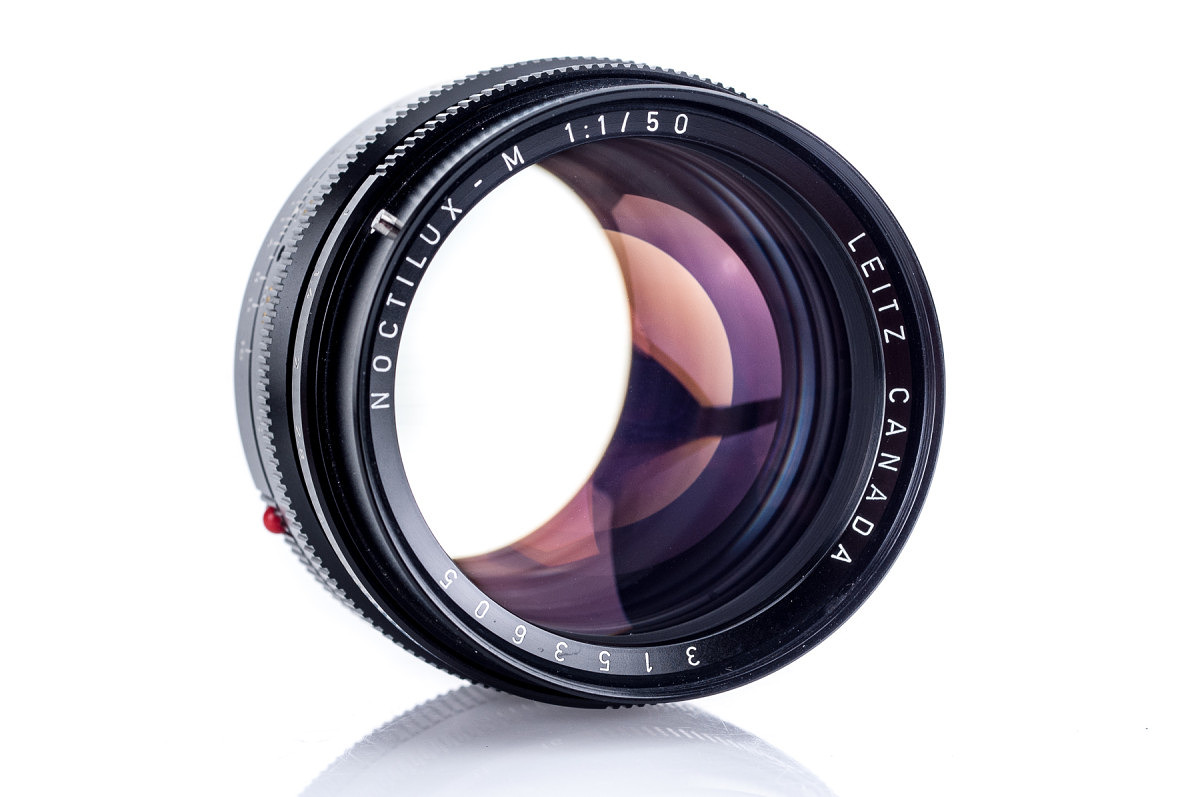
With the advent of the internet and the many Leica themed and based online fora, I once again became very aware of this Bokeh phenomenon. Occasionally, someone would post some images of one or two lenses they had used in the field extolling the virtues of the Bokeh they observed, and then other folks would comment good or bad. Digital media and the internet really provides an efficient way of seeing and evaluating examples of such a nebulous concept as Bokeh. Last Fall, I stumbled upon a little experiment on the Club Snap forum where they had camped out in a bar with some good Scotch and taken a number of photos of a still-life vignette (some liquor bottles, a glass with ice in it, out of focus bright lights in the background) and shot a number of 50mm lenses wide-open to capture and attempt to evaluate each lenses Bokeh. This led me to propose at last Fall’s board meeting in San Francisco that we try out this little exercise on our own as part of the festivities in Dearborn! To promote this event, I thought what could be better than doing a little article in Viewfinder on Bokeh to introduce LHSA members to the concept? I would shoot some sort of vignette with all of the fast lenses (faster lenses show more and better Bokeh than slow lenses) I could lay my hands on with my M9-P locked down on a heavy tripod to come up with some comparison among them as to their Bokeh qualities. I took some sample photos of my little set-up with a 20” high Geisha Doll that has been in my family for over fifty years to test the concept. I used the Geisha Doll as my subject for several reasons. First of all, I thought it appropriate to use a Japanese themed subject to illustrate a Japanese concept. Secondly, she was three dimensional as most subjects are in real life (unlike Air Force Aerial Test Targets or newsprint, which only really test field flatness and resolution with a subject matter few of us would choose in real life) with a lot of detail and texture in her costume. And third, by using an inanimate object for a subject, she would not get tired, move or complain about the project like human subjects tend to do!
After sharing my preliminary results with several of my LHSA associates and listening to their feedback, I of course expanded my horizons a bit and refined my technique and test procedure. As a result of my test shoot, I found that the M9 was not really suited to this type of work. Having only an optical rangefinder, it was subject to issues with mis-matches between lens and camera, which happens especially with lenses like the Noctilux and 75 Summilux. There was no way of ensuring camera/lens compatibility and rangefinder accuracy unless I had someone like Don Goldberg on hand during the testing! The M9 is also problematic with focus shift, where the lens will shift focus upon changing its aperture. This is a real problem with high-speed lenses with their razor-thin plane of focus and also knowing which aperture the designer chose to optimize lens focus at. Is optimum focus achieved wide-open, or at some other aperture? This is a known problem with the modern Zeiss 50/1.5 ZM Sonnar, as some were optimized to focus stopped down and others for optimum focus wide open! I needed something with live-view to eliminate this problem, and of course that dictated using an M240 which I do not own. A call to Leica USA was not fruitful as they did not have any available to loan. However, they did have a .95 Noctilux I could use for a few days which would come in handy. Now the clock was ticking, so I reached out to Dan Tamarkin and David Farkas to see if I could snag an M240 to use for my testing. David graciously responded by shipping out one of his demo M240’s. Dan Tamarkin was so enthusiastic that he volunteered to help with the shoot, and bring along some nice rarities like a 50/1.0 and the fabled 50/1.2 Noctilux lenses, a Thambar and a Hektor, among others along with his M240 demo camera. We made a date to do the shoot, and between the two of us, amassed quite a collection of interesting lenses to test. In addition to the Noctiluxes, we had two Thambars, two Summarexes, three 73 Hektors, numerous 50mm Summiluxes, Summarits, Summicrons, Summars and six Xenons! Throw in a Mountain Elmar just for fun, a 50/1.1 Nokton, a Canon 50/1.2 LTM and various assorted Canon, Nikkor and Zeiss LTM lenses and you’re beginning to get the picture! Wow, we had assembled the stuff of a Leica enthusiast’s dreams! In all, we tested over forty individual lenses in one afternoon, including most of the acknowledged “Bokeh Kings”, documenting our results along the way. In this article, I am presenting the first twelve lenses from the test. This will constitute part one, with another twelve to fourteen lenses being presented in part two in the next issue of Viewfinder.
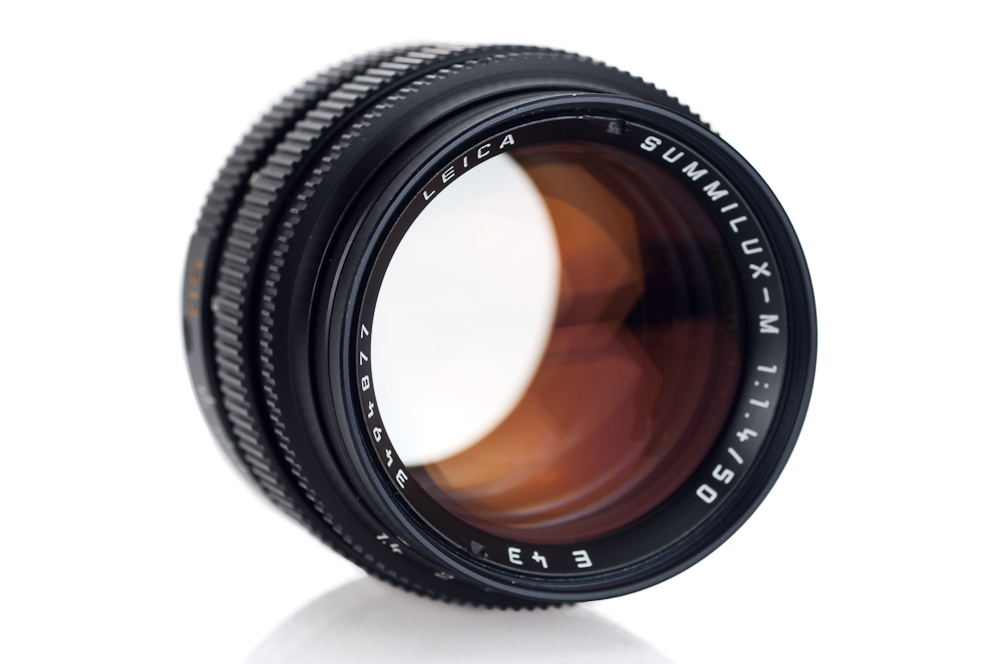
At the suggestion of Reed George, I added both a background and foreground subject matter to help illustrate how the Bokeh was behaving, not only at the plane of focus but also on subjects at other distances from the camera as one would encounter in real life. I used a second Geisha Doll in the background and a colorful Japanese fan in the foreground to keep the Japanese theme going. This would best show what is called “cream cheese” Bokeh. To illustrate “Hollywood” type Bokeh, I used LED Christmas lights fastened to a dark cloth background. This shows each lens’ rendering of the out-of-focus point light sources in the background. I will make more comment of this in my evaluation of the test results. The camera was locked down on a heavy 4 Series Gitzo tripod with my FLM 38 Series Ball Head, which is the basis for the new Leica Ball Heads. All images with the 50mm lenses were taken from the same position. For longer focal lengths, the camera position was moved back to approximate the same field of view as the 50mm lenses. I used the live view feature on the M240 with the 5x magnification to assist focusing, and focused on the doll’s eyes, just as you would with a human subject. One interesting observation during the test was the fact that even with live view, 5x magnification and focus peaking, the Noctilux lenses were still very difficult to focus reliably. Images were shot DNG at the camera native ISO of 200. Lighting was with a single LED Flood light rated at 2,700 degrees Kelvin bounced off an aluminized reflector over my left shoulder. This provided more even lighting than could be obtained with direct lighting. Ambient lighting is the only type I know of to use for Bokeh effect, which ruled out using flash. I metered the subject using a professional Sekonic L558r digital studio light meter set up for an incident reading. Shutter speed was varied to accommodate stopping the lens down two stops, in addition to the initial wide-open exposure. The second two stops down from wide-open exposure for each lens was done for several reasons.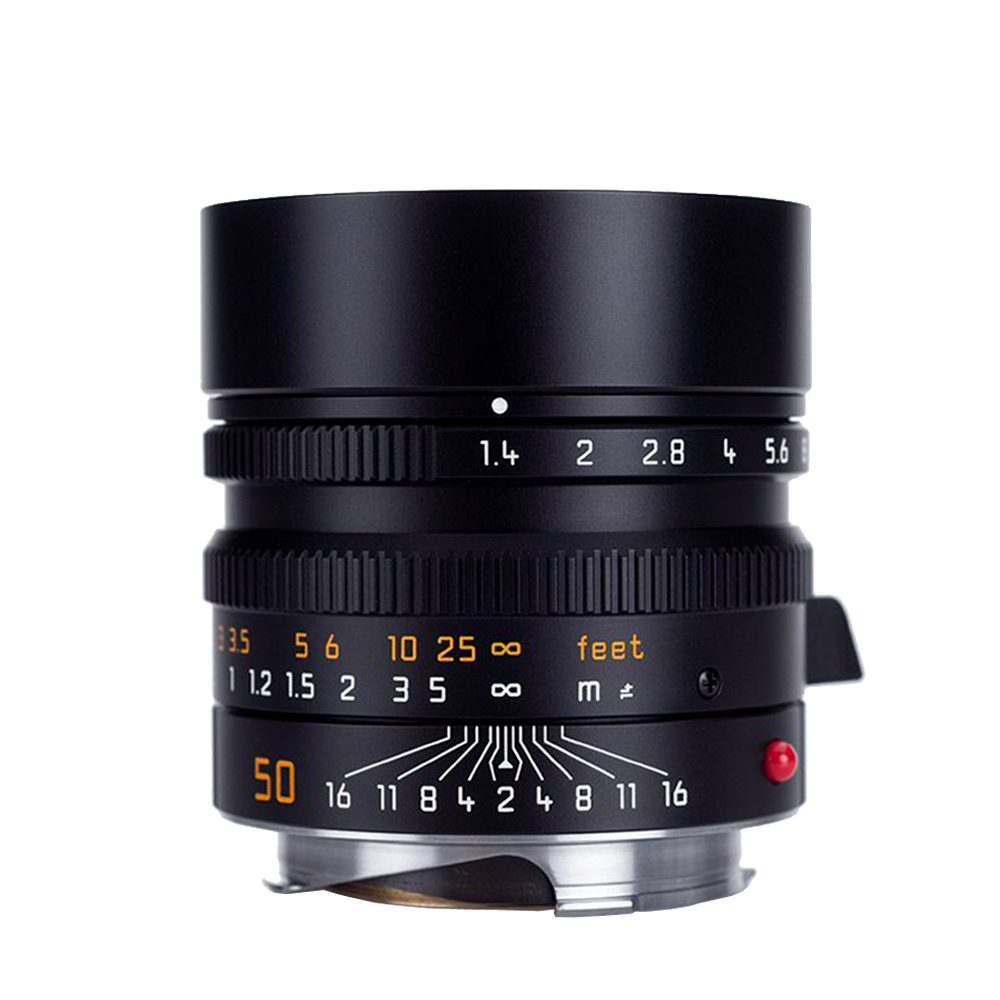
First, I wanted to observe the effect the diaphragm blades might have on point light source images. After all, shooting wide-open eliminates the influence of diaphragm blades and I wanted to see if the number and geometry of the diaphragm blades had any effect on the resulting image. Accepted Bokeh theory posits that a greater number of diaphragm blades and their geometry can have a great effect on Bokeh, so I wanted to see if this was true. Second, ever since attending the Leica Schule Wetzlar in the early 1970’s, they had drummed into my head that a lens’ Kiba number (the aperture two stops down from wide open, so named in honor of Theo Kisselbach noted Leica author and head of the Leica School), is the lens’ “sweet spot” for optimum sharpness and overall performance. I wanted to see how much the lens actually “improved” in its sharpness and saturation at this supposed “sweet spot” setting.
All images were processed in Lightroom 5.3, with the only adjustments made to color temperature (uniformly set at 2,846 K) and small tweaks to exposure for uniform density across all the images. The result is that I have tried to present the concept of Bokeh in a systematic and comparative way. Lastly came the challenge of how to show the test reults in a cogent and easily understood format. For that, my good friend Tsun Tam stepped up to the plate with his Photoshop skills to assemble the image collages presented here. Thanks to his hard work, you can more easily compare the Bokeh of each of the lenses, see how each lens renders the scene overall, and how each lens renders out-of-focus portions of the image, point light sources and as a bonus, how a given lens improves in sharpness and contrast when stopping down.
Many factors besides a large free aperture (the aperture of a lens wide open) and the number of aperture blades can have an influence on a lens’ Bokeh. Things such as lens coatings improve light transmission but also have a major positive influence on lens contrast and flare control, which can contribute to perceived sharpness. Note that a contrastier lens often is seen as a sharper lens because of perceived vs. actual sharpness. However, higher contrast or perceived sharpness may not be desired in a lens’ rendition of Bokeh. Lens coating was developed by Zeiss during the Second World War, with the first lens produced by Leitz with lens coating being the 85/1.5 Summarex (the one tested here dates from the 1943 batch which the Leitz delivery records show was not sold until after the war). I deliberately included the Xenon, Summarit, Summilux and Summilux ASPH lenses as part of this test. The Summarit and Summilux designs are essentially very similar to the design of the Xenon which dates back to 1936. The Xenon used in this test was from this original first batch of 165 lenses. The Summarit design is in fact identical to that of the Xenon, benefitting from the wide use of lens coating in the post-war years. Otherwise, these two lenses have almost identical performance. The Summilux (1959) in its first version design is again identical in cross-section to the Xenon and Summarit, but improved by incorporating the newly introduced high refractive index glass types (e.g. LaK9, Lanthanum Crown glass) the so-called “rare earth” glasses pioneered by Leitz with the Summicron. The second version Summilux tested here was introduced in 1962, being a redesign of the first version Summilux by Dr. Mandler of E. Leitz Canada in Midland. It wasn’t until 2003 that Leica was able to introduce a lens with significant performance improvement over the Summilux, the Summilux ASPH FLE lens, which incorporates exotic glass types and a floating element. A similar evolution can be seen with the Summicron through its various generational improvements from its Summitar roots. It is also interesting to see the evolution of the Noctilux from its introduction in 1966 with a maximum aperture of f/1.2, through the Mandler designed f/1.0 version, culminating in the current Karbe designed f/0.95 version introduced in 2008. Take a close look at how these different versions of the Summilux and Noctilux render the same subject under the controlled conditions in this test.
Perhaps more basic than the improvements brought by new glass types and lens coating is the “art” of the lens designer and his ability to design a highly corrected optical system otherwise known as a camera lens. Back in Max Berek’s day, all calculations were performed manually (usually done by women, who were known as “computers”, under the supervision of the head designer) and it literally took years to trace the light rays to sufficiently understand the aberrations in an optical design before production could begin. With Leitz’s pioneering work with digital computing and lens design programs from the 1950’s, these same calculations can now be performed in seconds. But the lens design programs developed since the advent of the modern computer do not tell the whole story or guarantee a good design. This is where the “art” of lens design comes into play through the creativity and insight of the designers and the thorough understanding of optics and experience shown by the talented individuals at Leitz and now Leica over the past century. It is interesting to see how some of the older “manually” designed lenses perform in these tests, compared to the modern computer aided designs. Here you have a unique opportunity to compare the “look” of these lenses on an equal basis. Then there are the “special case” lenses such as the Thambar, which was deliberately designed to have a higher level of spherical aberrations and employed a unique spot filter to block the sharper light rays of the central lens axis. Part two of this test series will show the results of this unique lens not only wide open and stopped down, but also with and without its special spot filter in place. Even with live view, the Thambar is probably the most difficult lens I have ever used and is totally unpredictable with the results it gives.
It is interesting to see how the lenses perform both wide open and stopped down. It especially interesting to see how the LED point light sources are rendered by the different lenses across the full frame of the image. These out-of-focus point light sources exhibit a wide variety of shapes. Far from being the expected perfectly round shape that you would expect to see, many of them are ovoid or egg shaped, bee hive shaped or football shaped. In addition, as you move farther out from the central lens axis, many of the OOF point light sources change their shape! I was expecting to see more uniformity here, with point light sources being more spherical in shape, which clearly they are not. Is this due to lens design, increased aberrations caused by off-axis light rays further from the central light bundle passing through the lens or some other phenomena associated with the LED lights themselves? Again, this is beyond the scope of this article. In regards to the influence of the number of aperture blades on Bokeh, this can only be seen upon stopping down the lens, as in a wide-open lens there should be no presence of aperture blades in the light path. I call your attention to the stopped down rendering in area C of the Xenon. You can clearly see the shape of the six aperture blades rendering the OOF point light source as a distinctly oblique hexagon. On the other hand, more diaphragm blades don’t always guarantee a smooth rendering of the OOF point light source. Direct your attention to the same area C rendering of the Summilux ASPH, where the aperture blades have a distinct saw-toothed pattern. However, the Summarex (you’ll have to wait for part two to see it) with no less than twenty highly curved diaphragm blades exhibits beautifully rounded, smooth OOF point light sources. This would validate the theory that more diaphragm blades with proper geometry can render OOF point light sources quite well. Another peculiarity of the OOF point light sources is that they appear to be “less filled in” in the wide-open exposures and become more filled in or have more uniform density as the lens is stopped down. Again it is beyond the scope of this article to explain this phenomenon, other than to point out that it does exist. And yes, all of the lenses showed positive improvement in saturation and sharpness when stopped down two stops from wide open. Older lenses like the Xenon and Summarit, all three versions of the Noctilux, the Nokton f/1.1 and the Canon 50/1.2 lenses showed marked improvement in saturation and sharpness by stopping down. The second version Summilux, the Summilux ASPH and the two Summicrons in part one of this test showed the least improvement in these areas, as their performance is already quite good wide open. Further stopping down mainly increases depth of field, but diminishes the Bokeh.
As the concept of Bokeh is entirely subjective, it is impossible to objectively define or quantify it as you can with other lens characteristics such as resolution. As they say, beauty is in the eye of the beholder and the same goes for Bokeh. What is “good” or “bad” Bokeh and what are its qualities? I would argue that there is no way to objectively judge or even describe it, although I would also argue that you can certainly recognize Bokeh when it is bad and when it is good. You alone must decide what you like or don’t like about a particular lens’ Bokeh. I hope I have provided you with a means to draw your own conclusions through my controlled tests of this group of lenses. I also hope that these articles and lens tests provide the basis for further discussion and study of the Bokeh phenomenon. It is also my hope that they encourage you to come to the annual meeting in Dearborn with your own lenses to participate in the Bokeh shootout we are planning. Stay tuned for part two of this article and we’ll see you in Dearborn!
This article was reprinted from Viewfinder, the quarterly journal of the LHSA. To learn more about the LHSA and to subscribe to the magazine, click here.


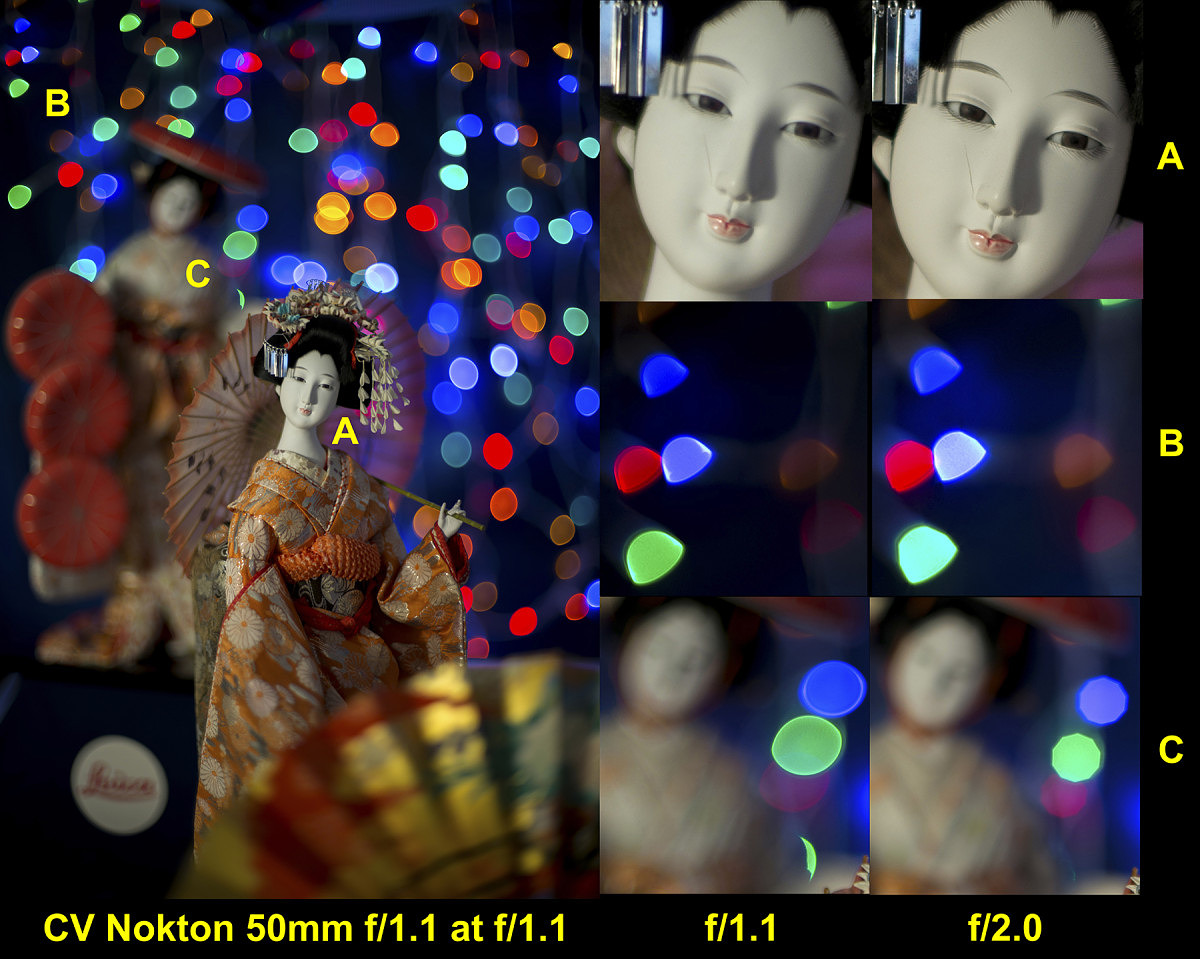

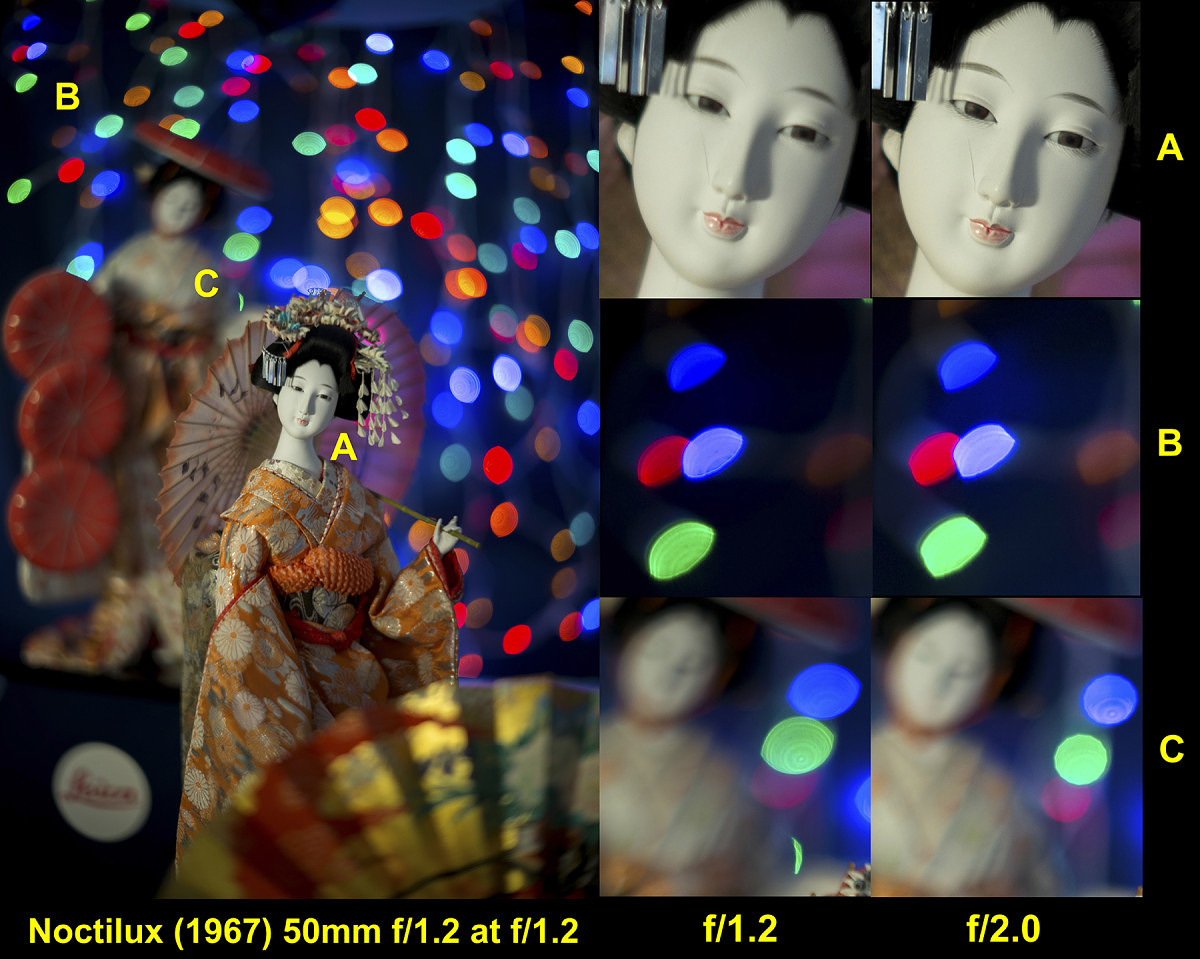
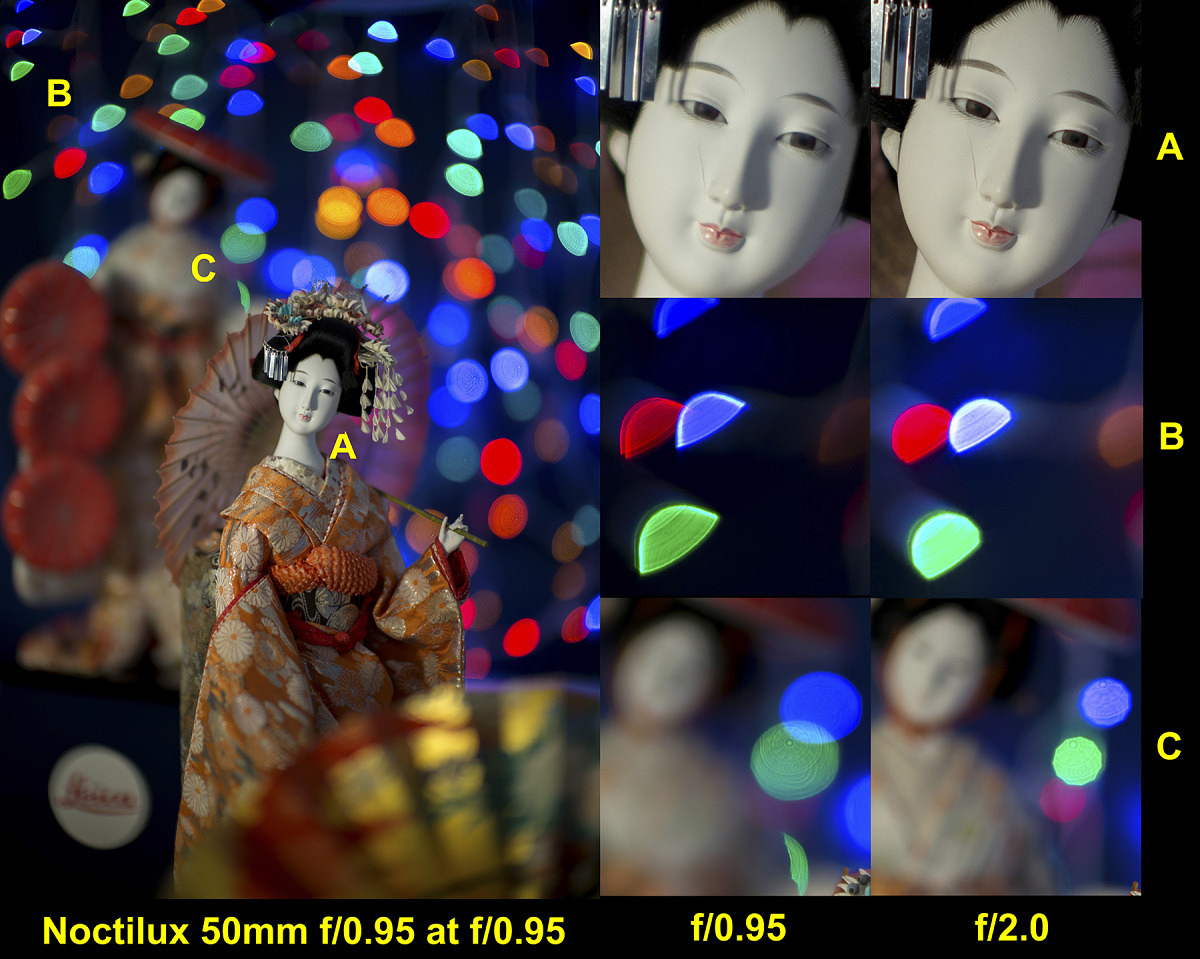

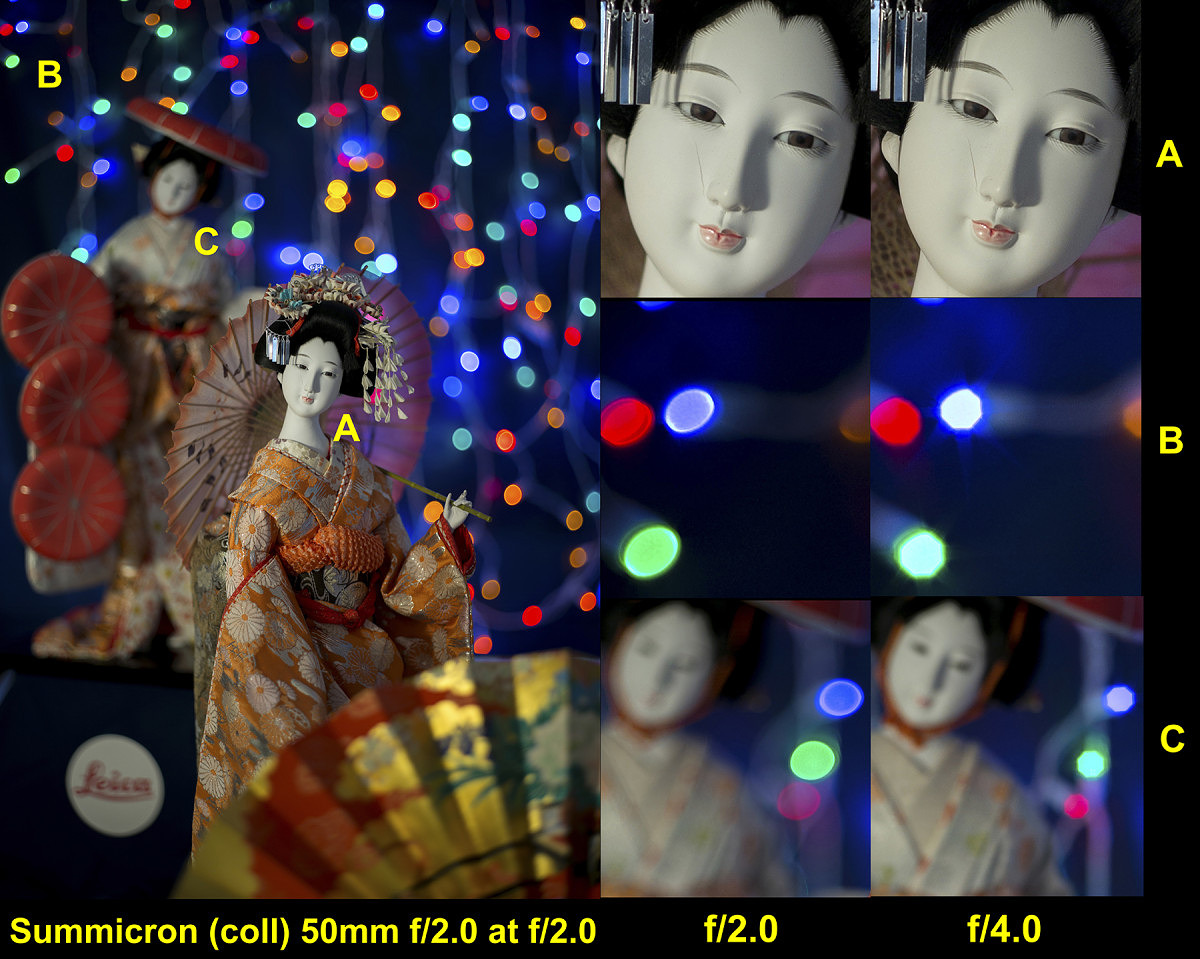
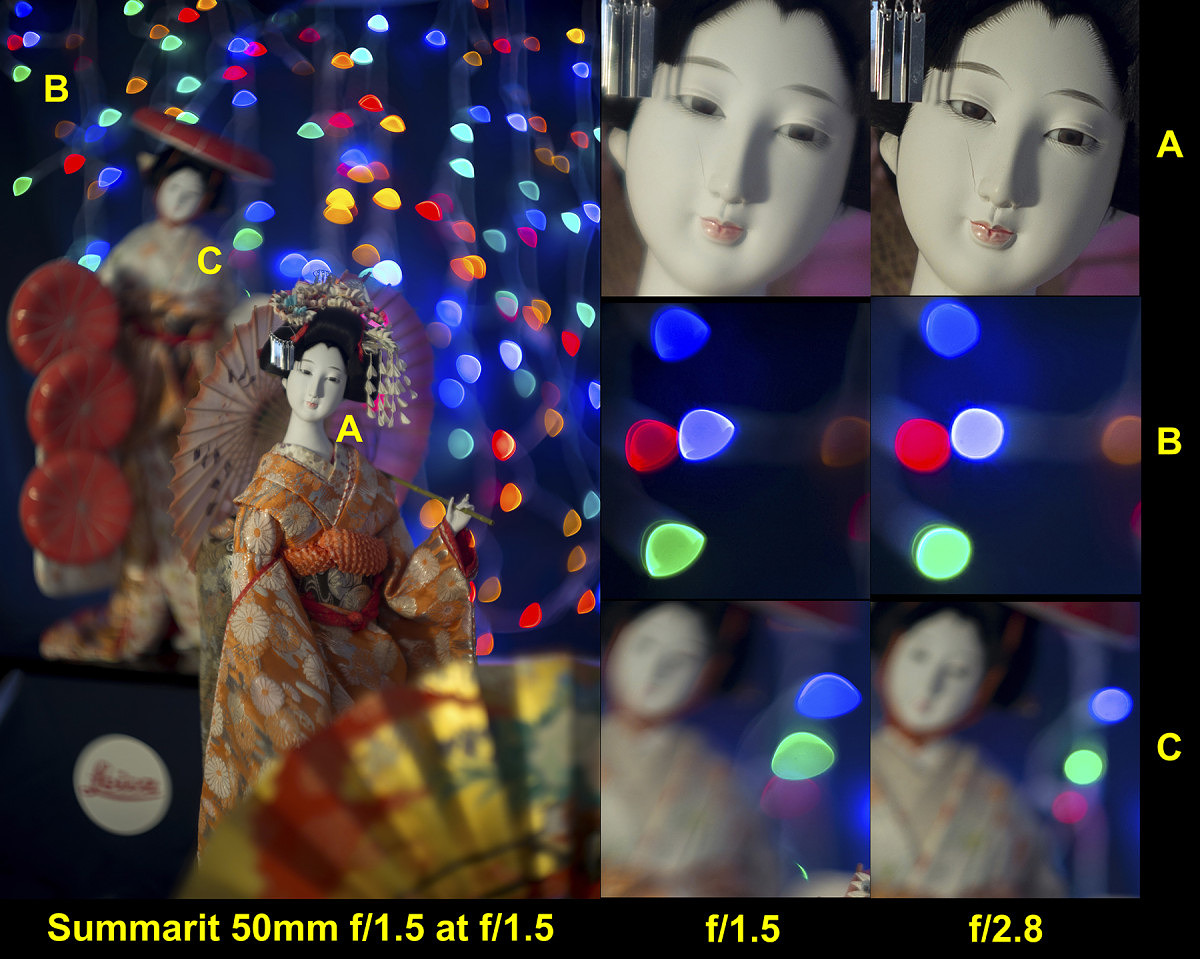
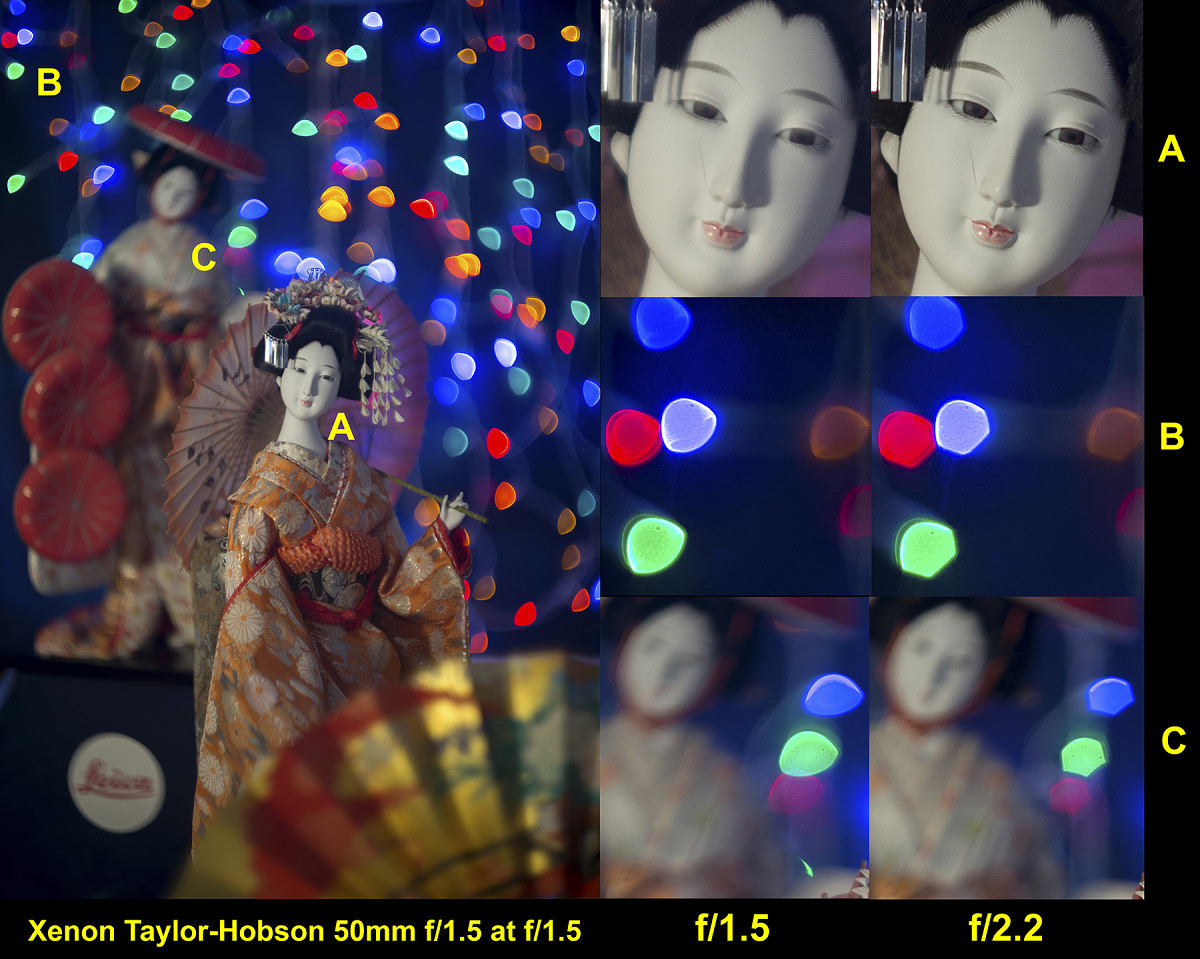
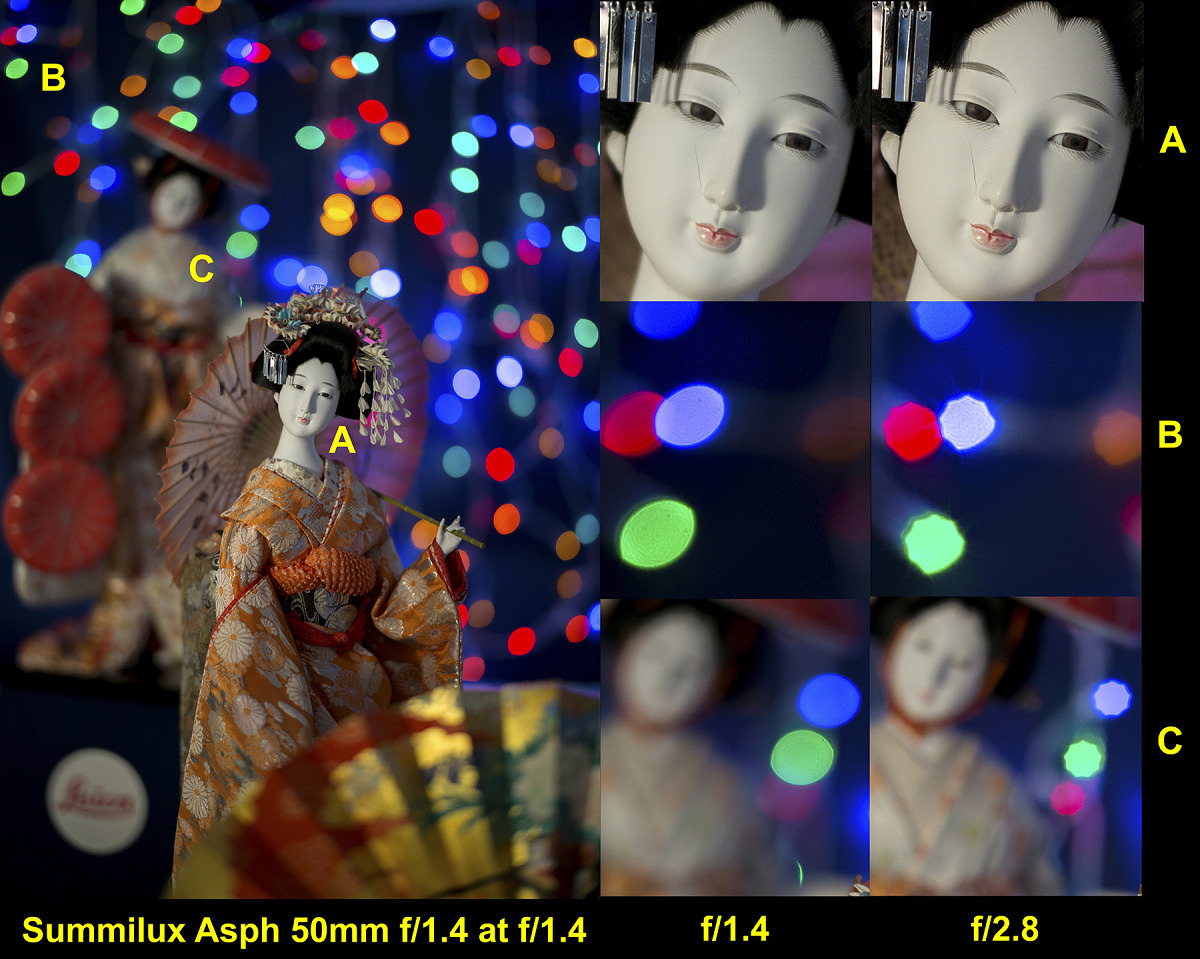

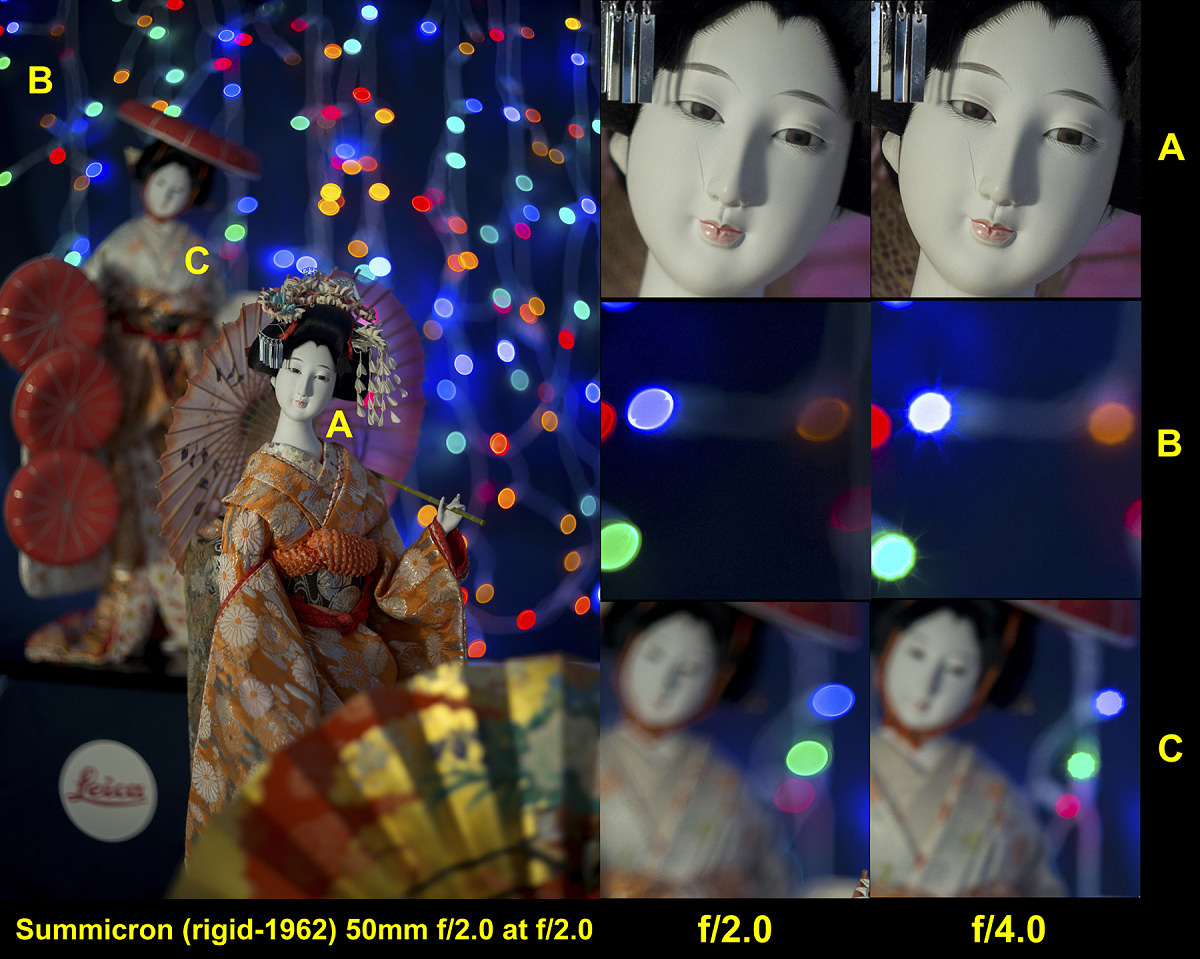
Would love to see the APO 50mm added to the comparison!
We tested the 50 APO along with about 20 other 50mm lenses at the LHSA (The International Leica Society) meeting in Detroit this past weekend. Bill and I did a live bokeh shootout, tethering the M240 to Lightroom on my computer, which was connected to a projector. It was very interesting to see such noticeable differences in the lenses. Long story short: the 50 APO was among the very best performers, if not the best of all the lenses we tested.
I just bought a late (491xxx) Xenon 5cm f1.5, tested it on the M Monochrom- this lens is optimized for F1.5 across range. The Summarit- optimized for F2.8 at 1m, and f1.5 at infinity. Of the 5 Summarits that I’ve disassembled (to clean), all were scribed “51.1”on the barrel, viewed when removed from the focus mount. The Xenon aperture seems to be designed to minimize focus shift due to spherical aberration, the Summarit Focal Length seems to take it into account.
As long as you are including third party lenses, why didn’t you include the Zeiss ZM Planar 50mm f2.0?
Actually, the M9 can shoot high-speed lenses very effectively. I have quite a few, and when I first got the M9 , it seemed quite difficult.
After quite a few indoor events, I am much more comfortable. I knew prefer to focus the M9 with superspeed glass over the Sony A7 and my hit rate is actually higher.
This is true even with the lenses which are not perfectly calibrated. For example, I have a beautiful Canon 85/1.5 which front focuses wide open. However, it’s totally consistent.I find that the brain is quite good and remembering just how far to separate split image in the patch and have a very good chance of acurate focus. The secret is to learn the lens.
About 10 or 15 minutes in the backyard on a cloudy day is plenty. Pick an object, focus shoot and check it. If it’s good move on and pick it object at another distance. If not, compensate and check again. With the lens that’s a bit out, this may take five or six tries. Note what works, pick another object and try again. The seemingly primitive M9 LCD is actually pretty good enough to precisely check focus if you zoom.
With this sort of concentrated practice each lens imprints itself on your memory, and you will find it can be focused quite well on the M9, weeks later with a little practice. Obviously, when the DOF is very small you will still miss a few, but this is true with any camera. However there are very few cameras which can deliver results as stunning as the M9 with superspeed glass wide open.
I realize you are talking 50mm, but the Helios 85mm f1.5 is pretty well known for fantastic bokeh… i use one sometimes on my Canon 7D. The Asahi Super Takamar 50mm 1.4 is probably a good, common, inexpensive comparison to these others. I think you can get the latter for like $75…and the former for about $350 or so, new ( they started to manufacture them again…)
Where is the C-Sonnar 50mm F1.5? Great mistake didn’t include it. King of Kings of bokeh.
Great article. And my Noctilux is number 41 units after your pictured one (top of article). It performs incredibly well, and has received a new birth on my Leica SL.
Dan
I think you are looking at lens aberrations here, and the correction of these in the design. In real life photographs, ‘bokeh’ is a function of aperture [and the corrections] , applied to objects LIT by directional light. ‘Bokeh’ works when the light is behind the object. It is irrelevant when the light is coming from behind the camera. For example, go into winter woods and shoot against the light, while focussed on a foreground object. Then you will find the effect called bokeh, to a less or greater degree with most lenses, but obviously most pronounced with a 0.95 or even wider. Try a Dallmeyer 2C [c. 1910, uncorrected] on a Hasselblad for example if you want ‘real bokeh’.
There is noctilux 0.95, which I shoot very often. But my favorite is the Canon 50/1. 2 M39 from 1963. In my opinion, this lens has an exceptional pattern.